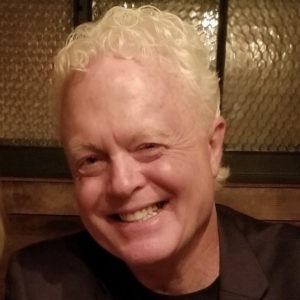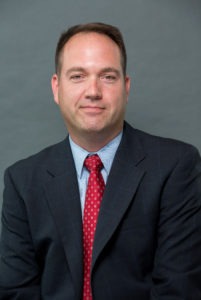Building the New Culture of Aging-One Leader at a Time
| Building the new culture of aging-One leader at a time Bill Keane, MS, MBA, Director of Special Programs, Mather LifeWays, interviews Bill Thomas, MD, founder of The Eden Alternative and The Green House Project |
| In observation of this month’s 5th annual Pioneer Network Conference, two long-term care pioneers in their own right focus on the much-discussed problem of culture change-most specifically, on the kind of leadership it takes. Following Keane’s introduction is his interview with Dr. Thomas. The phenomenon generally referred to as “culture change” (which is getting almost monthly coverage in this publication) is rapidly taking on the shape and content of a movement. Balanced against its growing number of passionate advocates, however, is the tendency to dismiss it all as a “flavor of the month.” In fact, the trend toward making person-directed care the organizing principle of long-term care is beginning to show measurable results in both quality of care and residents’ quality of life. The “culture” of aging in America is a sprawling, evolving structure of values, behaviors, ideas, habits, systems, customs, language, rituals, and practices that have been collected into an entrenched “conventional wisdom.” Proponents of reform are increasingly taking issue with the debilitating effects of the status quo, with its blind devotion to the institutional medicalization of late life and the dismissal of frail older people from the heart of our society. Overcoming that culture and creating the potential for a society that celebrates the elder as a still complex, growing person with an equal opportunity for dignity in daily life is our generation’s greatest challenge. It begins with a personal journey that allows us to explore the consequences of our own aging. It is the private reconsideration of what we believe about aging and longevity (our own and others’) that provides the foundation for a successful experience with organizational change strategies like The Eden AlternativeÖ, Wellspring, and others. This new culture must be sustainable if it is ever going to take root in our national consciousness. Only then can it evolve into a force capable of influencing American life and our economic and social systems. Change on this scale will require a new kind of leadership. That is why the Pioneer Network, in planning its 5th national conference this month in Overland Park, Kansas, has chosen to emphasize leadership development. A specific track within the conference is designed to give participants a focused opportunity to develop their culture-change leadership skills addressing such topics as self-assessment, collaboration, leadership competencies, sustaining change, and building external change agents. This latter topic focuses on the “movement leader” and how to reach out from our individual organization work to affect the greater society and develop the kind of deep system change that will affect future generations of elders, especially today’s aging baby boomers. Perhaps the most dramatic exemplar of this new generation of leadership is Dr. William Thomas, a practicing geriatrician from upstate New York, who founded The Eden Alternative 14 years ago and has extended his own journey for culture change into a number of spheres, including the fast-growing Green House Project that had its “bricks-and-mortar” inception last year in Tupelo, Mississippi. I asked him to share his leadership insights with the present and future culture-change leaders who read Nursing Homes/Long Term Care Management. So how did you get started on this journey we call culture change? Thomas: What attracted me in the beginning was simply the opportunity to give better care to my patients. I got started seeking to improve their overall well-being by going beyond simply treating their physical symptoms. How has this evolved over the past 14 years for you? Thomas: The ideas around a new culture of aging have actually been bubbling in our society for more than 150 years (read Tennyson’s poem “Ulysses” sometime). Within long-term care itself, the struggle for more person-directed care has been going on for decades. Our work today is inspired by the courage and imagination of leaders who gave us the concepts embodied in OBRA ’87 (Elma Holder and others), restraint-free care (Carter Williams), individualized care (Joanne Rader), the regenerative community (Barry Barkan), and many others. The movement really started to take off, though, in the 1990s. What are the key outcomes that you want to achieve? Thomas: First, we must make it our goal to abolish the institutional long-term care facility. They are a very recent creation (in historical terms) and they have served us all very poorly indeed. The idea of placing millions of elders in these settings is simply not conceivable anymore. The system is broken and must be replaced. Second, we must make person-directed care the culture of our healthcare system in general. Long-term care is leading the charge in this new evolution, although our acute-care systems must respond as well because they also play a crucial role in the care of older Americans. Finally, we must work to strengthen “elderhood” and return this component of the human life cycle to its rightful place in our society. How would you define the successful culture-change leader? Thomas: Leadership in long-term care ranges from the frontline charge nurse who influences staff and families to the administrator who is willing to spill blood, sweat, and tears to bring a new culture into being. I can’t emphasize enough, though, how crucial it is for the senior leader in the organization to be fully engaged in this process-intellectually, emotionally, and morally. It will not work without senior leadership’s commitment-it is as simple as that. Delegating a culture-change project for a “staff champion” to implement is the absolute wrong way to go; it signals to the staff that the leader is not serious about change, that it is the flavor of the month, and that if they wait long enough, it’ll all blow over. What kinds of skills or competencies are necessary to drive change in an organization serving elders? Thomas: Number one is storytelling ability. By this I don’t mean “once upon a time.” The stories I’m talking about encapsulate lessons into digestible, memorable chunks. Great political leaders do this-talk about a particular policy or project in terms of a great journey, with all the obstacles and rewards that lie ahead. The senior-care leader has to lay out the culture-change effort in this manner. As a simple guide to the storytelling approach, I would encourage administrators to pick up a copy of Aesop’s Fables and use it as a model. Using anecdotal success stories from other organizations is also very effective. The history of the Eden Alternative is paved with such anecdotes. How would you describe the current movement around culture change? Thomas: The movement is at a dangerous turning point where established organizations and associations are just starting to take note of it and get involved. The question is: Will mainstream leaders and their organizations join the movement, truly supporting the values and cultural ethos, or will the movement be absorbed into the current mainstream of long-term care “nice things to do”? The movement could lose its transformative nature, if the latter is the case. What kinds of skills or competencies are necessary to be an effective leader in the culture-change movement? Thomas: More than anything, we need to be diplomats. It would be very difficult for a would-be leader to step up to an owner or board of directors and say, “Look, we’re doing a lousy job and have to change things around here.” I think we all know what the first change there would likely be: a would-be leader looking for a job. We have to start by acknowledging that the fault lies not with the people (many of whom are among the most kind and gentle people on the planet), but with a deadly, sterile bureaucratic system that isn’t worthy of them. We have to build a system that honors and enriches all who live and work within it. What has to happen next? Thomas: We have to go directly to our elders, consumers, residents, and families and change the national conversation about aging and long-term care. The current headlines around prescription drug benefits, Medicaid cuts, and assisted living shortfalls are not really about culture change. They call on us more to rearrange, rather than change, our established approaches to aging, which actually sustain the current model of institutional care. Can we imagine a society that welcomes aging and makes good use of all that it has to offer us? How would you describe your personal role as a leader in the movement? Thomas: I try to tell the stories that help people make sense of all this. At the same time, I hope to continually refresh the dialogue by asking questions and pushing myself as far beyond the conventional wisdom as I can go. |
| Bill Keane, MS, MBA, is Director of Special Programs, Mather LifeWays Institute on Aging, Evanston, Illinois. For further information, phone (847) 492-6819 or e-mail bkeane@matherlifeways.com. To comment on this article, please send an e-mail to keane0804@nursinghomesmagazine.com. For reprints in quantities of 100 or more, call (866) 377-6454. |
I Advance Senior Care is the industry-leading source for practical, in-depth, business-building, and resident care information for owners, executives, administrators, and directors of nursing at assisted living communities, skilled nursing facilities, post-acute facilities, and continuing care retirement communities. The I Advance Senior Care editorial team and industry experts provide market analysis, strategic direction, policy commentary, clinical best-practices, business management, and technology breakthroughs.
I Advance Senior Care is part of the Institute for the Advancement of Senior Care and published by Plain-English Health Care.
Related Articles
Topics: Advocacy , Articles , Leadership











